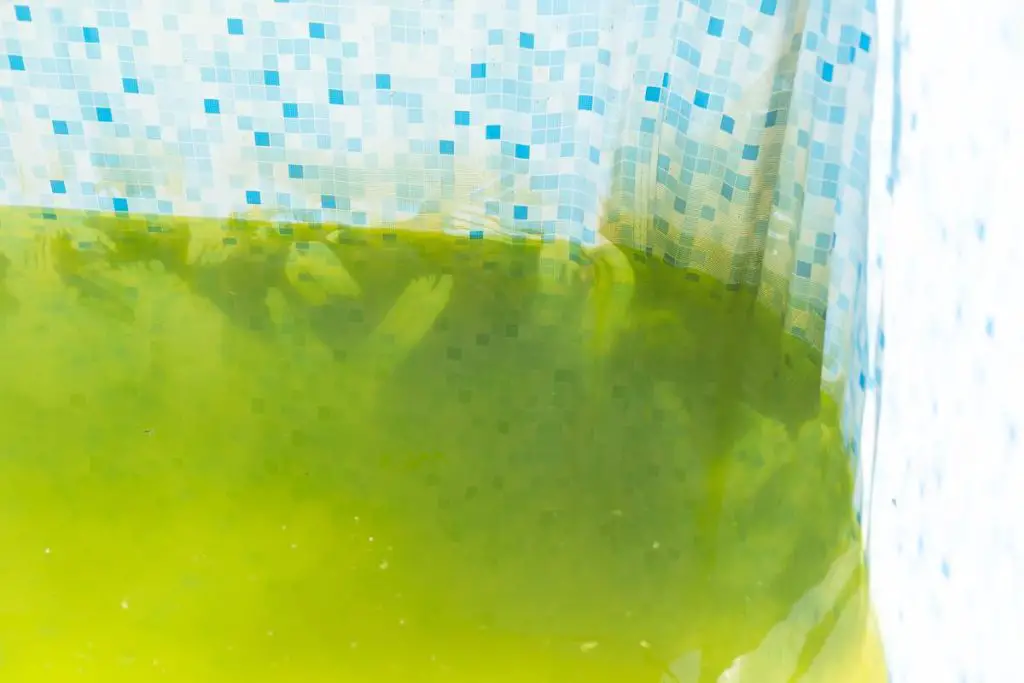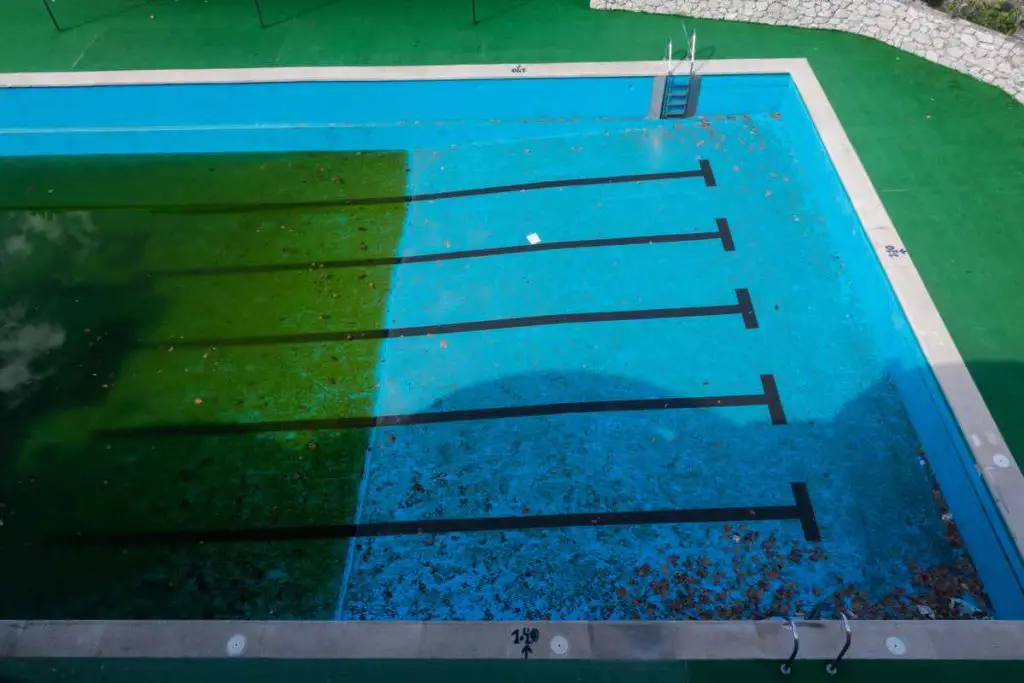Black mold is a nuisance and a danger, but unfortunately, it commonly grows on pavers around pools due to excessive moisture. While it can be hard to keep black mold away, you can take steps to get rid of it.
To get rid of black mold on pavers around a pool, you’ll need to tidy the area, apply bleach to the affected pavers, scrub the bleach into the ground, and rinse everything with a garden hose. Apply sealer to avoid future problems.
This article will discuss how to get rid of black mold on pavers in greater detail. Keep reading this step-by-step guide to learn more!

1. Tidy the Area Around the Pool
First, you must tidy the area around the pool. For example, there should be no loose dirt or other items around the pavers. Things like kids’ toys and other pool accessories should be out of the way so that you can remove the black mold as efficiently as possible.
You can pick things up and sweep away any small particles or dirt. Once the area is tidy and free from any disturbances, you can move to the next step.
2. Apply a Bleach and Water Solution to the Pavers
Try a bleach and water solution if the mold is extreme and stubborn. Once you mix the two ingredients, you can add them directly to the pavers and let them sit for a while. As the mixture soaks in, the mold should come off quickly.
Here is a brief guide on how to make and use a bleach and water solution for pool pavers:
- Protect yourself by wearing safety equipment, like a face mask and gloves.
- Mix one cup (236.5 ml) of bleach with four or five cups (1.18 liters) of water (depending on how strong you want the solution to be).
- Pour the mixture onto the pavers; alternatively, you can spray it on.
- Allow it to soak into the black mold for 30-40 minutes.
Although bleach is one way to eliminate black mold, vinegar is also a good choice. For this method, you don’t need to use diluted vinegar. All you need is some white vinegar and a spray bottle.
Spray the vinegar onto the moldy areas and let it sit for a few minutes. The mold should come off, leaving you with a clean pool area! Another thing you can use is a mild detergent, which you likely already have in your home.
3. Sweep and Scrub the Pavers With a Brush
Once you’ve applied the bleach solution (or white vinegar) and let it sit long enough, you can start scrubbing the area to eliminate the mold. You’ll need a dense, sturdy brush to get the job done, and you’ll also need to put some elbow grease into it.
As you scrub the pavers, you should notice the mold coming off. Make sure to scrub every affected section; if you miss any parts, the mold might remain. Once you’ve scrubbed every paver, you can move on to the next step: rinsing.
4. Rinse and Wash the Pavers Using a Hose
For this step, you’ll need a hose. It’s even better if you have a pressure washer, but many people don’t have these. Once your hose or pressure washer is ready, turn it on and direct it toward the pavers. The aim is to clean and rinse the bleach/vinegar solution off the pavers, leaving a clean surface underneath.
Continue dousing the area with water until you’re confident it’s spotless. Then, you can go to the final step of the process.
5. Leave the Area To Dry
Finally, you’ll need to give the pavers time to dry. To ensure they dry as quickly as possible, choose a hot, sunny day to clean them. That way, the sun will dry them quickly, and they won’t remain wet from rainfall or other elements.
Avoid walking on the pavers or going near the pool until they’re fully dry because you may want to apply a sealer later.
6. Apply a Sealant To Prevent Black Mold in the Future
After removing the black mold from your pavers, it’s an excellent idea to apply a sealant once they dry. A sealant will protect the pavers and help them last longer, so there’s no reason not to use one! It can block out UV rays and manage moisture.
Here are the things you’ll need to apply a sealant to your pool pavers:
- Sealant
- Application brush or paint roller
- Protective equipment, including a face mask and gloves
- A container to place the sealant into
Below is a guide on how to apply a sealant to prevent black mold in the future:
- Clean the area. If you’ve followed the steps in this article, you should have already completed this part.
- Allow the area to dry. You want to apply the sealant to a dry surface. Depending on the weather, the pavers could take a few hours to a day to dry.
- Prepare the sealant. Next, you should prepare your sealant by following the instructions on the packaging. Pour it into an appropriate container so that it’s easily accessible.
- Start sealing: Once the sealant is ready, you can seal the pavers using a brush or paint roller. Ensure you get every part, and avoid standing on pavers you’ve already sealed.
- Allow the sealer to dry. The instructions on the packaging should tell you how long it will take for the sealer to dry. Avoid standing on the pavers until you’re sure they’re fully dry and ready.
If you follow these steps correctly, the sealant should protect the pavers around your pool from future instances of mold. Be sure to reapply a sealant every 3-5 years.
Molds on pavers around a pool may cause sinking, but there are also other causes for sinking. Check out my other guide to understand the main reasons pavers sink.

Conclusion
Black mold is a common problem in pavers around pools due to the excessive moisture in the area. As detailed in this article, you can get rid of it by following a few simple steps.
However, removing the mold is only half the battle; applying a sealant will ensure mold stays away for the next few years, so you should apply it once your pavers are dry. After using a sealant, you won’t need to reapply it for another 3-5 years.

